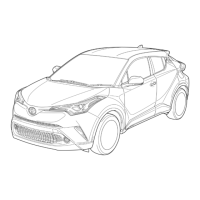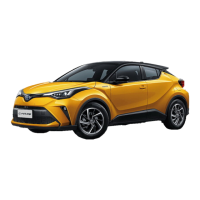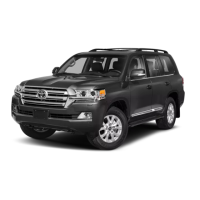Do you have a question about the Toyota C-HR 2020 and is the answer not in the manual?
Essential information and precautions for safe operation.
Procedures and checks to perform before starting to drive.
Adjusting seat and mirrors for optimal driving posture.
Detailed instructions on correct seat belt usage and fastening.
General information about the Supplemental Restraint System airbags.
Overview of gauges, meters, warning lights, and displays.
Explanation of warning lights and indicators on the instrument cluster.
Information about vehicle keys and their functions.
Procedures for unlocking and locking doors from outside and inside.
Instructions for adjusting front and rear seats and head restraints.
How to adjust the steering wheel and view mirrors.
Operation of power windows, including lock and protection functions.
Procedures and precautions for safe driving preparation.
Steps for starting the engine, driving, and stopping the vehicle.
Instructions for operating the engine switch and shift lever.
How to use the engine switch without a smart key.
Controls and operation of headlights, fog lights, and wipers.
Controls for headlights, parking lights, and fog lights.
Overview of various driving assistance systems.
Explanation of the Pre-Collision System and its functions.
How to operate the air conditioning and defogger systems.
Controls and adjustments for the vehicle's air conditioning.
Information on interior lighting and their operation.
Operation of front and rear interior lights.
Details on various storage compartments like glove box and cup holders.
Identification of all storage features available in the vehicle.
Information on sun visors, vanity mirrors, and assist grips.
Procedures for cleaning and protecting the vehicle's exterior.
Steps to protect and maintain the vehicle's exterior finish.
Overview of maintenance requirements and schedules.
Routine checks for the engine compartment and vehicle interior.
Guidelines and precautions for performing basic maintenance tasks.
Information on checking tire condition, rotation, and pressure.
Basic procedures for handling emergency situations.
How to use the emergency flasher system.
Procedures for various emergency situations like towing and flat tires.
Guidelines for towing the vehicle and when to contact service.
Steps for safely changing a flat tire.
Troubleshooting steps when the engine fails to start.
Technical data for the vehicle, including dimensions and weight.
Key dimensions and weight specifications of the vehicle.
How to personalize vehicle features through settings.
List of vehicle features that can be customized by the user.
Procedure for reporting vehicle safety defects to NHTSA.
French explanation of seat belt instructions for Canadian owners.
French explanation of SRS airbag instructions for Canadian owners.
An alphabetical listing of topics and their corresponding page numbers.
| Brand | Toyota |
|---|---|
| Model | C-HR 2020 |
| Category | Automobile |
| Language | English |












